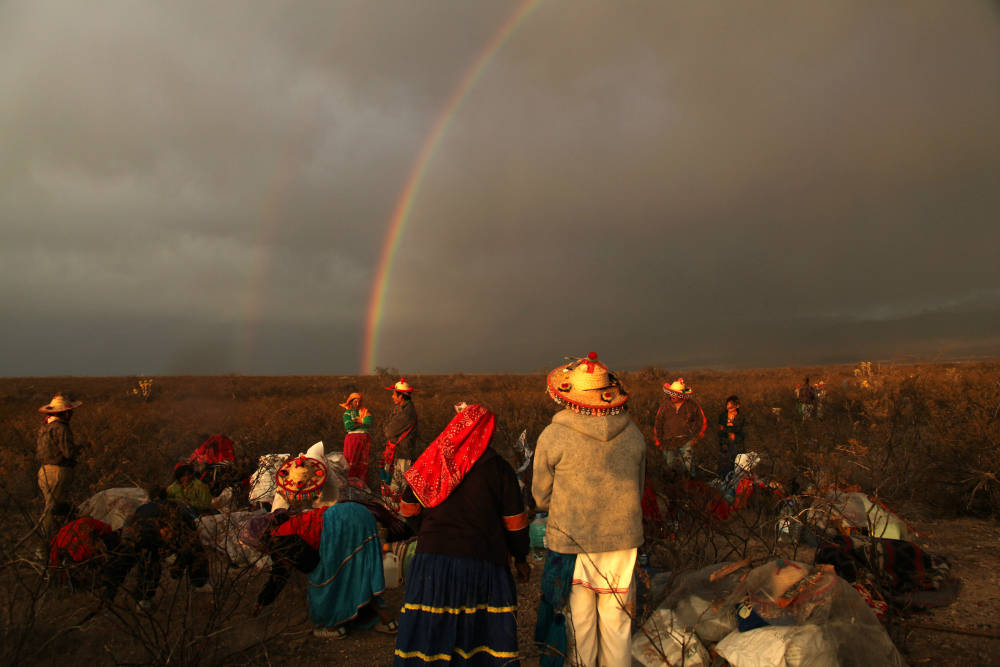
The high plains of Wirikuta is a biologically rich territory, where 80% of the birds of the entire Chihuahua desert are present, more than half of the mammals and more than half of the species of flora have been reported; however this territory only covers 0.3% of the surface of this vast semi-desert zone that extends from central Mexico into the southeastern US states of Arizona, New Mexico and Texas.
It is a place where a cultural wealth is concentrated like few places in the world, as it is the main pilgrimage destination of the Wixárika people, because in their cosmovision, it is the origin of the world and the knowledge that gives them their identity as the original people of these lands. It is also a place where millions of Catholic pilgrims visit San Francisco de Assisi in Real de Catorce, as well as thousands of tourists from different parts of the world who visit Wirikuta to experience its spectacular landscapes and to find spaces of introspection and emotional and spiritual growth.
Today more than ever, the Wirikuta highlands is in danger. The government has plans to use this sacred space to deposit toxic waste and is capable of devastating and looting the mineral deposits of gold, silver and antimony from the destruction of the natural and cultural environment.
These topics are at the “Second Forum on the Wirikuta Highlands, Threatened Desert,” which took place on Nov. 30 at the municipal seat of Cedral and is now available online at the Facebook page of Salvemos Wirikuta. The forum, which is only available in Spanish, features the voices of peasants who are resisting the ongoing devastation caused by agroindustrial mining companies and a proposed toxic waste dump, as well as commissioned representatives of the Wixárika people and the scientific community. The forum is promoted and facilitated by the Committee in Defense of Water of Catorce, the Committee in Defense of Life of Santo Domingo and surrounding municipalities, the Action Group for Water and Life of Guadalcazar, the Social Pastoral Office of the Diocese of Matehuala, the Jalisco Association of Support of Indigenous Groups (AJAGI) and the Thematic Network of Biocultural Heritage of the National Council of Science and Technology.
It will be broadcast live over the Internet, and the website will be announced at the Facebook page of Salvemos Wirikuta.
Tunuary Roberto Chávez is a natural resources engineer and a technical consultant to the coalition of organizations that are working to protect the desert of Wirikuta.

Indigenous Peoples are putting their bodies on the line and it's our responsibility to make sure you know why. That takes time, expertise and resources - and we're up against a constant tide of misinformation and distorted coverage. By supporting IC you're empowering the kind of journalism we need, at the moment we need it most.